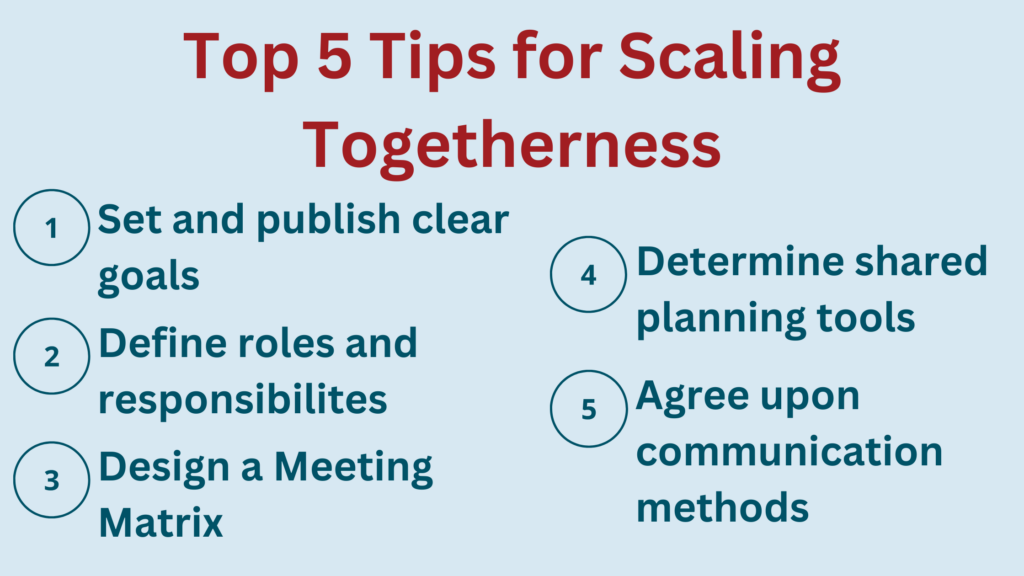
In class last week, we received a great question from an Area Superintendent of a large, urban school district. In short, she noted that Togetherness systems had served her well as a school leader, and she was curious when and how to scale Togetherness. I loved this question, and I think about it often as we work with nonprofit CEOs, district senior leaders and more. You may want to reference your copy of The Together Leader for more information.
- Get the goals super clear (Chapter 3). I don’t care what you call them (OKRs, targets, outcomes, WHATEVER), but are you directionally clear where you are going and does everyone know it? And I don’t mean just the senior team, but the entire organization. Are these goals published, referred to, and monitored? No one can be Truly Together if they don’t know what they are working towards. Plus, most of us work in mission-driven contexts, so the goals are also inspiring and motivating for many of us.
- Spell out the roles and responsibilities (Chapter 3). I have seen your spreadsheets, folks, with super detailed R&Rs, and I like the clarity. But do you also have an outward-facing version that is useful for your colleagues? Because scaling is impossible if everyone is coming to YOU with every question. This becomes especially important if your team has grown, and the who-does-what has changed. Set a cadence to revisit and republish each year.
- Design a Meeting Matrix (Chapter 5). Meetings take up lots of time on senior leaders’ calendars, and while meetings are not evil… meetings that don’t align with those goals mentioned above can be a pesky waste of time. We encourage you to step back on a seasonal rhythm and audit who you meet with when and why, and then make sure that meeting has the right humans, the right cadence, and the right amount of time to get the job done. Some places have lots of “legacy meetings” in place that can be eliminated, or meetings that need to be added based on changing priorities.
- Create and use (some) common planning tools (Chapter 4). You don’t have to go all wild, but it helps to set up common expectations around which planning tools you use with your team and why. For example, in some cases, your team may want to use Priority Plans to align on workload. In some cases, shared project management software may be necessary. For whatever you choose, please make sure people have been trained and the why is super clear.
- Streamline the communication channels (Chapter 11). We all know there are TOO many ways to reach people nowadays, and in some cases, it makes sense to spell out which ones are used for what. Because maybe reminding someone with a text used to work, but now feels invasive? Or perhaps email has become too back-and-forth and a chat app should be used instead? It is worth a seasonal evaluation of what is working and not working. Just because you adopted something at one point does not mean it needs to be forever.
How about you? Any ways you have led Togetherness scaling across your team?


